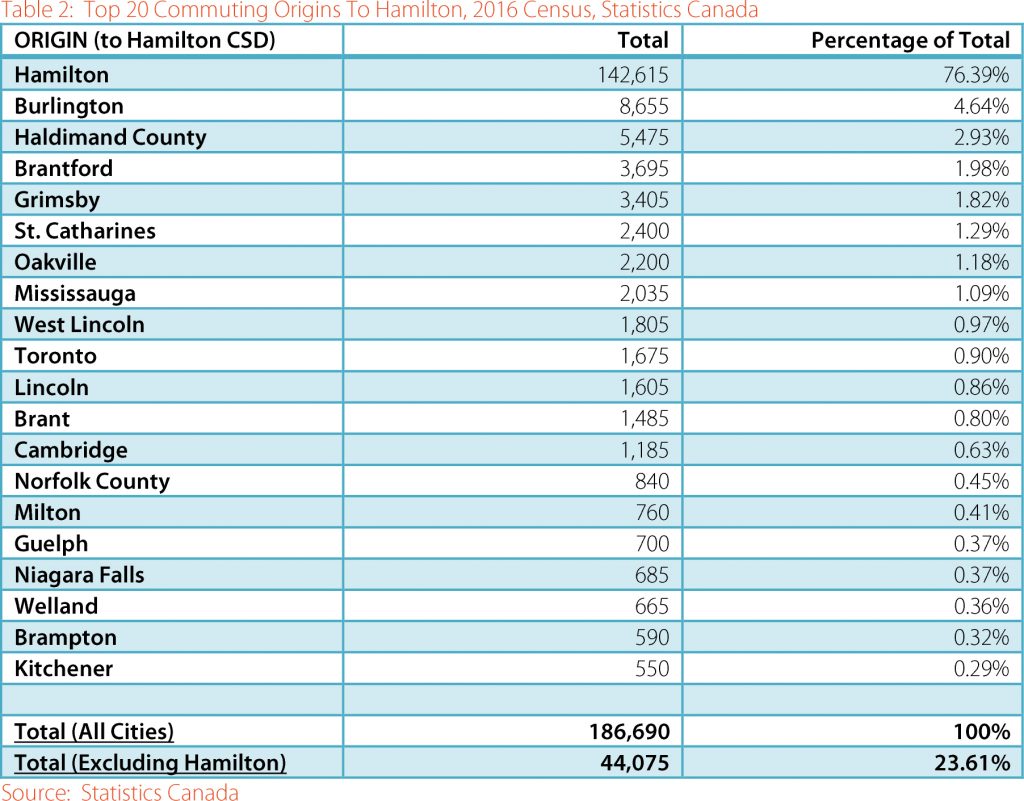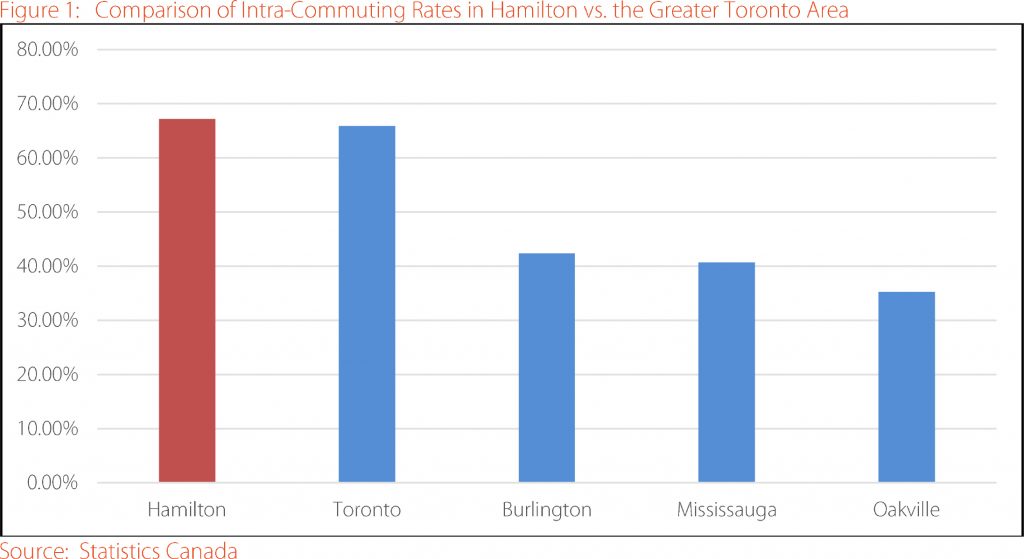Who’s a Bedroom Community?
Understanding commuter flows within and between cities is important for urban planning and infrastructure investment. Think of all the spending the Province of Ontario is putting towards transit, both regional and local. However, does the investment match the commuting realities of the municipalities? What’s the balance between spending to help people move in and out of cities as compared to helping people move more efficiently within cities? With the growing regionalization of the Greater Golden Horseshoe, Civicplan looked at the flow of commuters in and out of Hamilton, Ontario to help inform this discussion. A commuter is defined as someone who’s place of work is outside of their place of residence. All statistics are from the Statistics Canada 2016 Census unless otherwise stated.
Commuting From Hamilton
There are 212,230 commuters in the Hamilton Census Subdivision (CSD) which encompasses the city of Hamilton. Of that total, nearly 70 percent work in the City of Hamilton (Table 1). For the approximately 30 percent that commute out of Hamilton each day, Burlington is the most popular destination representing approximately 11.6 percent of commuters overall. Oakville, Mississauga, and Toronto are the next major destinations collectively representing just under 12 percent of commuters. Table 1 displays the top 20 commuting destinations from Hamilton.
Commuting To Hamilton
Over 40,000 people commute into Hamilton each day. Of that total, over 35 percent (about 14,500) come from communities east along the lakeshore, including Toronto, Mississauga, Oakville, and Burlington. Burlington is the largest single source of commuters into Hamilton representing almost 20 percent of in-commuters. Table 2 shows the top 20 commuter origin locations for Hamilton.
Comparison with Intra-Commuting in the GTA
Intra-commuting refers to commuting flows that occur within the same city. Figure 1 demonstrates that despite increasing regionalization of communities in southern Ontario, Hamilton still retains a high percentage of people who live and work within the city. Some of the areas traditionally deemed “bedroom communities” such as Burlington, Mississauga, or Oakville maintain approximately 43 percent or less of their workforce within their city boundaries, while Hamilton has maintained close to a 70 percent intra-commuting rate, albeit with a slight drop of about 3 percent from 2006. Of note, the latest data for both Toronto and Mississauga shows a large decrease in intra-commuting.
Conclusions
Hamilton maintains a strong intra-commuting level with the vast majority of commuters (67.20%) living and working in the city. This is in contrast to bedroom communities in the GTA where intra-commuting rates do not exceed 43 percent. In terms of commuting flows, more people commute out of Hamilton than commute in each day, although the proportion has fluctuated over the time period observed. In general, people commuting from Hamilton tend to travel within the CMA (Hamilton, Burlington, Grimsby) or east to the GTA, whereas people commuting to Hamilton come from a wider area including significant flows from communities to the west.
___________________
This CivicSquare post is based on the UrbanInsights Bulletin, Where Hamilton Works: Local and Regional Commuting Trends.




